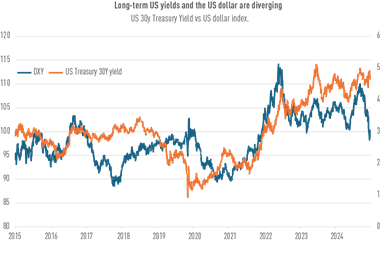Expect growth, lots of it. That is conclusion of specialist research house Z-Ben Advisors, in their most recent analysis of the Chinese fund management market. Ivan Shi provides this executive overview.
The difficult is our daily bread, but the impossible sometimes takes a little longer. Forecasting the shape, size and structure of China’s funds management industry in 2020 - and presenting those forecasts in a manner that allows the global asset management community to make sensible and well-grounded allocations of time and capital - is well-nigh impossible. But it is also, in our view, a necessity. This is one of the few reports we have ever attempted exclusively because clients demanded it.
Over the past three years China has taken centre stage as the most likely - and most coveted - source of fund management revenue and growth for the coming decade. Knowing how China’s spoils will be assembled and offered is now a business necessity, even though the usual caveats about the utility of long-term forecasting in developing markets must be doubled in strength. Please, let that be one of the key warnings that every reader remembers while reading this report: in China’s financial markets, few things are certain and fewer are stable.
Guesswork with Chinese Characteristics
As in all of our research initiatives, we created our long term projections by mixing methodologies applied in international markets with others - some of them home-grown - which better match the Chinese marketplace. As an example, we can see no value in “projecting” industry AUM simply by compounding an arbitrary annual growth rate. Instead, we extrapolated past trends, particularly the boom/bust cycles that are common to China, to gauge the near-term (out to 2014) growth trajectory. By employing such methods, we hope to provide the most value to the analyst community. Similar combinations of the expected and idiosyncratic colour all of the research underpinning this report. In China, there are clear and identifiable patterns within the chaos, you just need to know where to look.
Such pattern recognition skills are also invaluable when identifying areas of fast development and projecting the rate of their development. No expert opinion is needed to understand that the current landscape of the Chinese fund management industry looks entirely different from 2000. The same logic should apply when assessing what may lie ahead.
Today, the investment management landscape is far more complex, including embryonic business lines such as segregated accounts and enterprise annuities. At the same time, there are signs that more substantial offshore business opportunities are rising to match those present onshore. These small examples illustrate the extent to which an overall impression of growth can be distorted by the selection of areas to monitor: make the wrong choices and one may project overall stagnation while an ignored area of business flourishes. Identifying those areas with the greatest odds of fast growth is one of the key tasks of this report: decisions about whether (and how much) to invest in China must be made by focusing on the exploitable opportunities, not the lure of generalized growth.
Perhaps the only real conclusion which can be drawn from our forecasting exercise is this: what takes place over the next decade won’t be as described in this report. However, we have at least some reasons to believe that our guesses will be closer than most.
What the Tea Leaves Told Us
Our long-form report, China 2020 Market Forecast: Growth and its Consequences, is divided into eight sections, each of which contains detailed forecasts for growth and development from 2010-2020. To accommodate the needs of strategic planners, who must understand what environment they will face in five or ten years’ time as well as the opportunities that environment will offer, we have focused the contents of this report on specific areas of change that can be acted upon by well-positioned global asset managers. These are some of our key findings.
Market Sizing: We project total industry AUM of Rmb6.9tr (USD1.0tr) by 2014, rising to Rmb15tr (USD2.2tr) or more by 2020, as noted in the chart on the previous page. For the coming decade, the theme will be bank disintermediation as investors scour the market for better alternatives to meet their long-term financial objectives. Z-Ben Advisors expects AUM growth to be supported by two additional factors, the first of which is capital appreciation of the industry’s invested assets, especially equities. The second variable underpinning AUM growth is an expansion in both the number of new FMCs entering the marketplace (totaling 77 firms by end-2014) as well as greater regulatory ease in launching new products. QDII funds will rise in size to USD120bn by 2014, accounting for 13% of industry AUM.
More Reform, More Opening Up: Significant long-term supports for stock and bond market growth are now in evidence. The key drivers of capital market development in China, including GDP growth and growth in working age population, suggest that regulators will soon increase equity (and fixed income) market participation, primarily by further reform of G-share trading and by offering greater structural support for institutional investors. Expect choppy but significant growth in the value and usage of China’s capital markets, accompanied by liberalization of trading rules.
Demand Dynamics: Mutual funds will be the key beneficiaries of growth in China’s GDP and incomes over the next ten years, as we forecast that mutual fund holdings will make up an increasing proportion of household savings. Retail and institutional customers will vie for dominance over the next five years, with surges from each likely caused by regulatory reforms. Both types of customer will create demand for alternative fund distribution platforms such as IFAs, DEDT and in-house salesforces and help to crack the banks’ distribution stranglehold. Expect better-funded and more discriminating customers to become the norm.
Product Development: More than 500 new product launches will be required to meet demand by 2014 and we expect substantially greater diversity of product types to emerge. While we forecast that equity funds will retain their primacy, we project significant development in the balanced equity category, primarily to meet the needs of pension and insurance investors, with later development of aggressive fixed-income funds. We also believe that development of alternative, REIT and 130/30 funds will begin in China in the enxt five years, again driven by regulatory change, but are unlikely to capture significant market share. Expect product launches to dominate marketing activity in the next five years, just as they have since 2006.
QDII: A flood of new quota will transform the QDII program by 2014, with as many as 50 Chinese fund managers competing to offer offshore investing, primarily through equity funds. Expect the current top players to retain the lion’s share of QDII AUM and for Hong Kong to lose its allure as the destination of choice for QDII investing. An important trend to watch will be geographic allocation of QDII portfolios. Z-Ben Advisors projects that for the near future, a strong preference will persist for Hong Kong and emerging Asian markets.
Within several years high levels of correlation between mainland A-shares and the Hang Seng Index will likely motivate many investors to tread further afield. Retail investors will also become more sophisticated and demand more flexibility with risk/return profiles, potentially seeking stability in mature markets. Both trends lead us to expect increased QDII product allocation in a wider variety of indices.
Competitive Dynamics: Operating licenses for fund management companies in China will be strictly rationed by CSRC and fewer than 15 new entrants should be expected in the next five years. In a closed market, with rising AUM and stable profits, we forecast that the current top ten firms will consolidate their positions, while all but a handful of mid-tier firms will see inexorable declines in their market share. Expect a hard slog for small firms and new entrants, while top players reap a rich harvest through IPOs.
Z-Ben Advisors expects the first round of FMCs publicly listing shares will take place as early as 2011, as the chart below shows. Using history as a guide argues in favor of strong mid-tier FMCs (Guangfa, China Universal) being the first to market. A successful first round of IPOs would then be quickly followed by a second round in 2012. This time, those FMCs listing shares would be the industry’s heavyweights (China AMC, E-Fund) although, pending market conditions, they may go to market at slightly lower valuations.
By 2014 most other qualified FMCs will be approved to list shares with a normalized and streamlined process much like the ones that exist for commercial banks and securities firms. There will be ramifications. A public listing will open the doors for M&A activity both domestically and, Z-Ben Advisors suspects, abroad.
Global Ambitions: Hong Kong is rapidly becoming a staging area to launch a global assault by well-funded and ambitious Chinese fund management companies. The scale of these ambitions is, perhaps, unmatched by any other nation’s fund management companies, and we are forced to the conclusion that Chinese FMCs will soon have both the weight and will to acquire almost any foreign rival that can expand their territorial reach.
A minimum of four Chinese FMCs are projected to rank among the ten largest global asset managers by market capitalization in 2014. Through at least 2020, listed Chinese FMCs will be priced at a valuation which far exceeds their international counterparts. Listed Chinese FMCs will have ample war chests enabling fast global expansion (at least regionally) through the acquisition of rival asset managers. Expect Chinese FMCs to begin buying their way into Asian, European and American markets by mid-decade, if not sooner.
Ivan Shi is a senior associate at Z-Ben Advisors in Shanghai.



























No comments yet